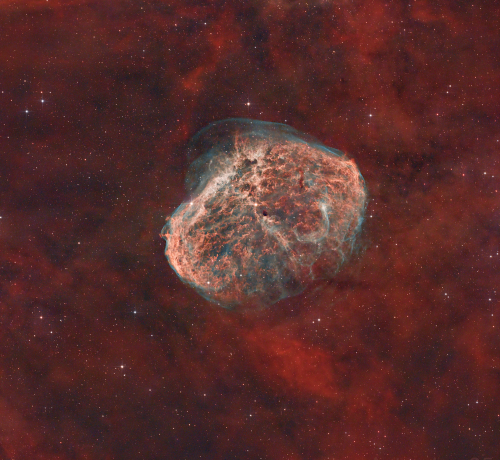Your personal Tumblr library awaits
Astrophotography - Blog Posts

Sharp Nebula Shot!
IC 405 & 410 Mosaic - Flame and Tadpole Nebulas

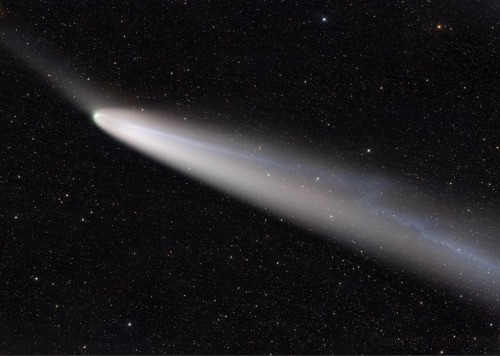
C/2023 A3 (Tsuchinshan-ATLAS) 2024-10-23, clearest photo ever taken of a comet!

Pleiades: The Seven Sisters Star Cluster
Credits: Blake Estes, Christian Sasse

The Lonely Neutron Star in Supernova E0102 72.3
Credits: NASA, CXC, ESO, F. Vogt et al., ESO, VLT, MUSE, NASA, STScI

Geminid Meteors over Chile
Credits: Yuri Beletsky, Carnegie, Las Campanas Observatory, TWAN
Jupiter and Mars, footage captured by me through my Dobsonian with a DSLR. Tracking done by hand.
Scientists believe they've found evidence of what was once an ocean on Mars. Check out the shoreline on mars!


Cosmic Cliffs in Carina © JWST

e t e r n a l b l i s s

The midnight sky, Flagstaff AZ - 10/8/2023

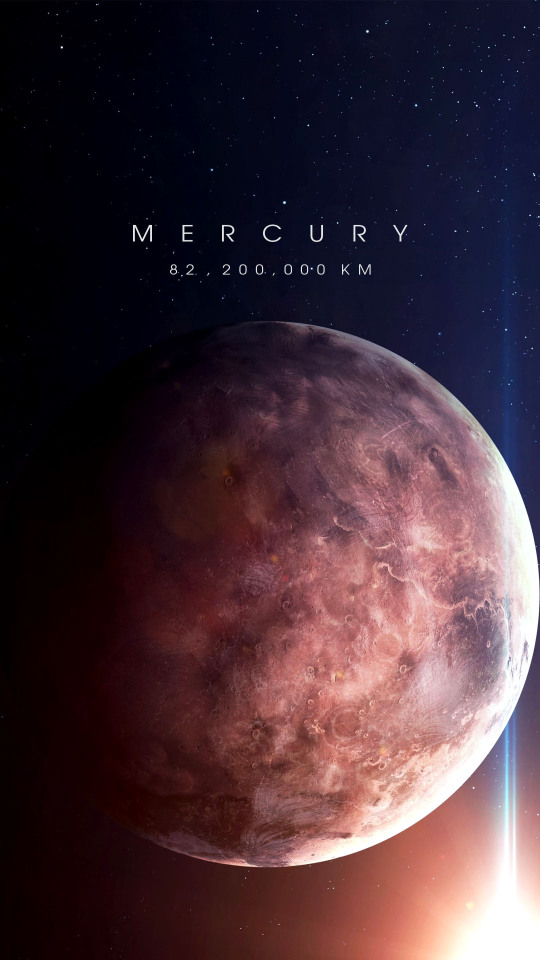



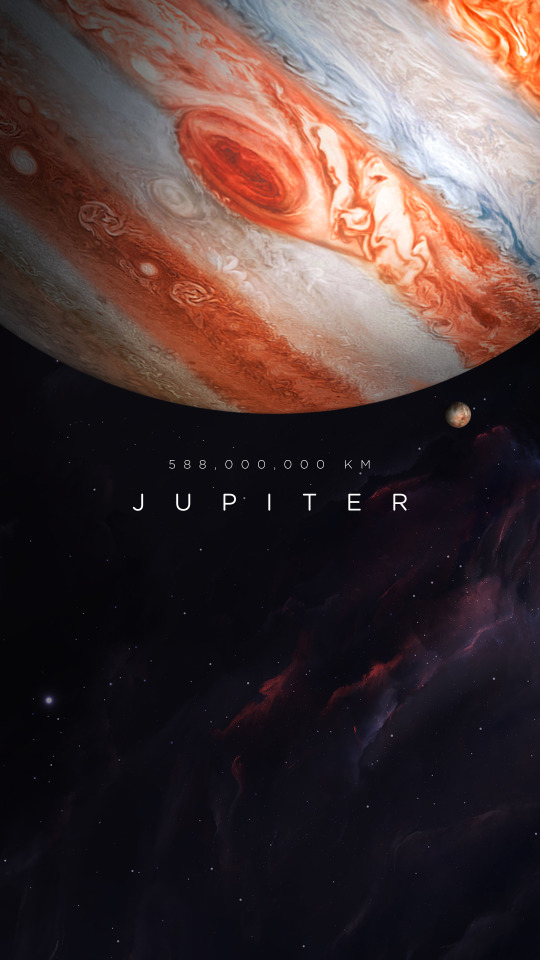
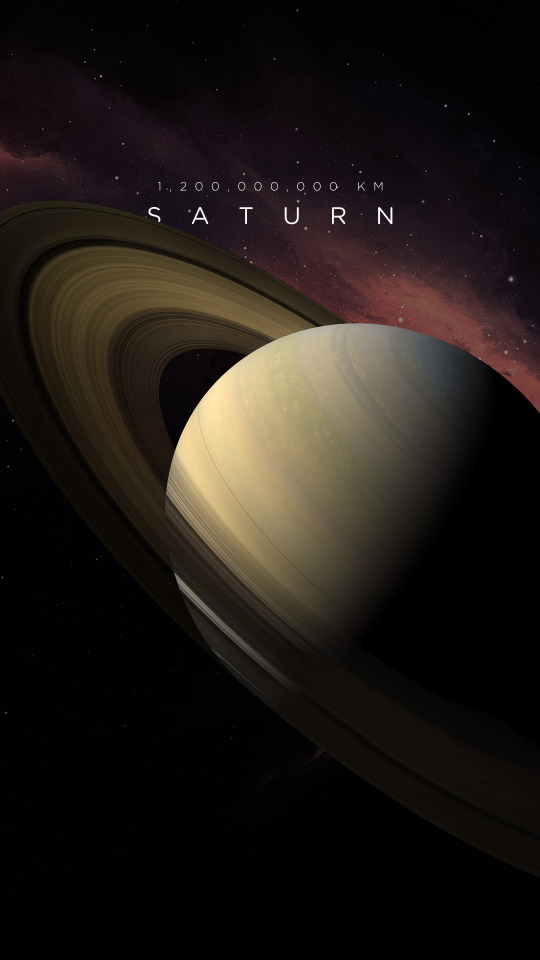
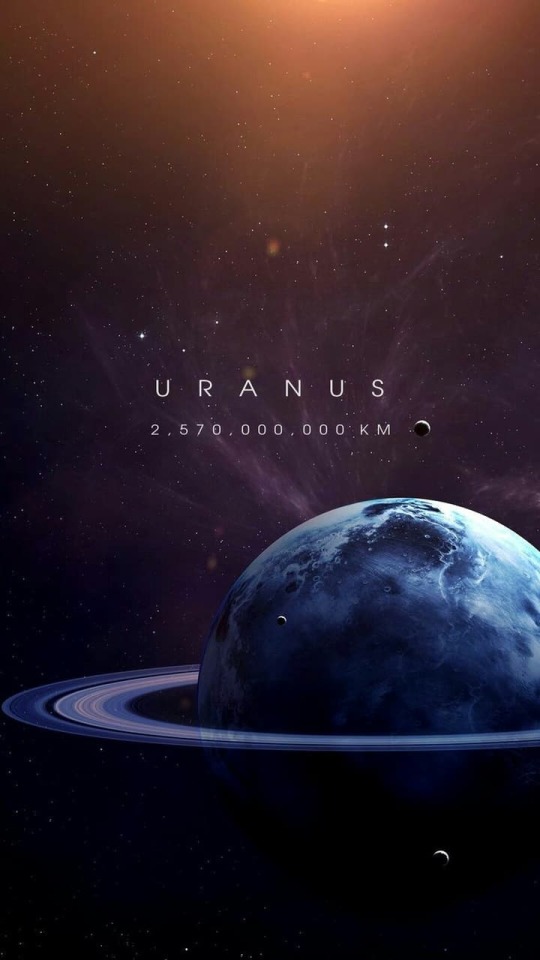

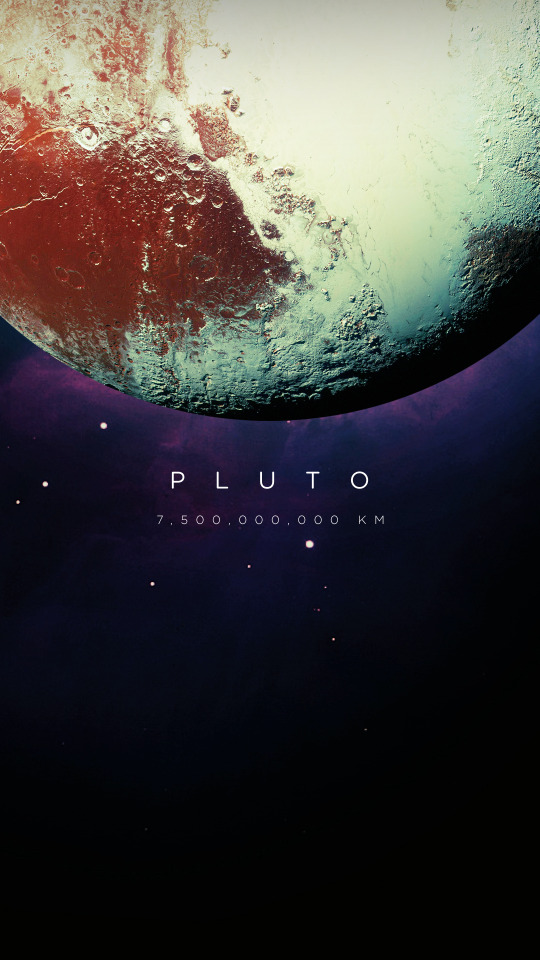
Our Amazing Solar System
Hello sorry for an ask. I am very sick, my asthma is at its maximum level, my nose freezes, I have no medicine or food. I am in bad shape financially, I am a black disabled, who uses multiple medications, I pay for my food and lodging
Unfortunately I do not have all the resources to keep me safe, that is why I need your help, whatever you can contribute to me will be of great help.
Hello! No need to apologize. I can't donate to you sadly, and I am sorry, so I will share instead. I hope you reach your goal ❤❤
Heloo
Im Mahmoud from Gaza ..i need your help if you can
Please donate to save my life and my family 🍉🇵🇸
My link in bio
Asking for help is not easy .l request a small donation of $ 15 or $25 from each person .$35 will save my family and help me cover travel expenses and rebuild.what's left of my home
you can deliver your regards
throgh link (please see my bio)https://www.gofundme.com/f/helping-gaza-family-to-get-out
My account has been verified by @90-ghost
I unfortunately cannot donate to you but i will instead share this ask. May Allah protect you and your family 💞
have you seen the JWST images of the pillars of creation? i could cry just looking at them. they’re so beautiful.
looking at them i get so emotional. i can’t believe i am lucky enough to be alive in this time of beginning to understand the cosmos.

(second half has been rotated to match orientation of the first)
once i am well enough i will be going to college for astrophysics. i cannot wait to be who i know i can be.

Mars, aka the Red Planet, is the 4th rock from the Sun and the only known planet solely inhabited by robots. It is also the only orange dot you'll see in the sky. I mean besides the sun. ---- #mars #astronomy #astrophotography #nightsky #nightphotography #stars #redplanet #funfacts #skyscape #summer #summernights #donotlookdirectlyatthesun #photography #halifax #nikon #nikond5300 (at Halifax, Nova Scotia)

A Geminid meteor streaks across the sky as the Soyuz TMA-19M spacecraft is rolled out by train to the launch pad at the Baikonur Cosmodrome on Sunday, Dec. 13, 2015, in Kazakhstan. Credit: NASA/Joel Kowsky
Make a Wish! How to See the Geminid Meteor Shower
Every December, we have a chance to see one of our favorite meteor showers – the Geminids. To help you prepare, we’ve answered some of your most commonly asked questions. Happy viewing, stargazers!

These radar images of near-Earth object 3200 Phaethon were generated by astronomers at the National Science Foundation's Arecibo Observatory on Dec. 17, 2017. Observations of Phaethon were conducted at Arecibo from Dec. 15 through 19, 2017. At time of closest approach on Dec. 16 at 3 p.m. PST (6 p.m. EST, 2300 UTC), the asteroid was about 6.4 million miles (10.3 million kilometers) away, or about 27 times the distance from Earth to the Moon. Credit: Arecibo Observatory/NASA/NSF
What are the Geminids?
The Geminids are caused by debris from a celestial object known as 3200 Phaethon striking Earth’s atmosphere. Phaethon’s origin is the subject of some debate. Some astronomers consider it to be an extinct comet, based on observations showing some small amount of material leaving its surface. Others argue that it has to be an asteroid because of its orbit and its similarity to the main-belt asteroid Pallas.

All meteors appear to come from the same place in the sky, which is called the radiant. The Geminids appear to radiate from a point in the constellation Gemini, hence the name “Geminids.” The graphic shows the radiants of 388 meteors with speeds of 35 km/s observed by the NASA Fireball Network in December 2020. All the radiants are in Gemini, which means they belong to the Geminid shower. Credit: NASA
Why are they called the Geminids?
All meteors associated with a shower have similar orbits, and they all appear to come from the same place in the sky, which is called the radiant. The Geminids appear to radiate from a point in the constellation Gemini, hence the name “Geminids.”

A Geminid streaks across the sky in this photo from December 2019. Credit: NASA
When is the best time to view them?
The Geminid meteor shower is active for much of December, but the peak will occur during the night of Dec. 13 into the morning of Dec. 14, 2023. Meteor rates in rural areas can be upwards of one per minute this year with minimal moonlight to interfere.
What do I need to see them?
As with all meteor showers, all you need is a clear sky, darkness, a bit of patience, and perhaps warm outerwear and blankets for this one. You don’t need to look in any particular direction, as meteors can generally be seen all over the sky. If you want to take photographs, check out these helpful tips.

An infographic based on 2019’s meteor camera data for the Geminids. Credit: NASA
Do you have any advice to help me see the Geminids better?
Find the darkest place you can and give your eyes about 30 minutes to adapt to the dark. Avoid looking at your cell phone, as it will disrupt your night vision. Lie flat on your back and look straight up, taking in as much sky as possible.

A Geminid streaks across the sky in this photo from December 2011. Credit: NASA
What will the meteors look like?
According to Bill Cooke, lead for the Meteoroid Environment Office at NASA’s Marshall Space Flight Center in Huntsville, Alabama, “Most meteors appear to be colorless or white, however the Geminids appear with a greenish hue. They’re pretty meteors!” Depending on the meteor’s chemical composition, the meteor will emit different colors when burned in the Earth’s atmosphere. Oxygen, magnesium, and nickel usually produce green.
Make sure to follow us on Tumblr for your regular dose of space!

The James Webb Space Telescope has just completed a successful first year of science. Let’s celebrate by seeing the birth of Sun-like stars in this brand-new image from the Webb telescope!
This is a small star-forming region in the Rho Ophiuchi cloud complex. At 390 light-years away, it's the closest star-forming region to Earth. There are around 50 young stars here, all of them similar in mass to the Sun, or smaller. The darkest areas are the densest, where thick dust cocoons still-forming protostars. Huge red bipolar jets of molecular hydrogen dominate the image, appearing horizontally across the upper third and vertically on the right. These occur when a star first bursts through its natal envelope of cosmic dust, shooting out a pair of opposing jets into space like a newborn first stretching her arms out into the world. In contrast, the star S1 has carved out a glowing cave of dust in the lower half of the image. It is the only star in the image that is significantly more massive than the Sun.
Thanks to Webb’s sensitive instruments, we get to witness moments like this at the beginning of a star’s life. One year in, Webb’s science mission is only just getting started. The second year of observations has already been selected, with plans to build on an exciting first year that exceeded expectations. Here’s to many more years of scientific discovery with Webb.
Make sure to follow us on Tumblr for your regular dose of space!
Credits: NASA, ESA, CSA, STScI, Klaus Pontoppidan (STScI)
Sakura to Supernova

This rare sight is a super-bright, massive Wolf-Rayet star. Calling forth the ephemeral nature of cherry blossoms, the Wolf-Rayet phase is a fleeting stage that only some stars go through soon before they explode.
The star, WR 124, is 15,000 light-years away in the constellation Sagittarius. It is 30 times the mass of the Sun and has shed 10 Suns worth of material – so far. As the ejected gas moves away from the star and cools, cosmic dust forms and glows in the infrared light detectable by NASA's James Webb Space Telescope.
The origin of cosmic dust that can survive a supernova blast is of great interest to astronomers for multiple reasons. Dust shelters forming stars, gathers together to help form planets, and serves as a platform for molecules to form and clump together, including the building blocks of life on Earth.
Stars like WR 124 also help astronomers understand the early history of the universe. Similar dying stars first seeded the young universe with heavy elements forged in their cores – elements that are now common in the current era, including on Earth.
The James Webb Space Telescope opens up new possibilities for studying details in cosmic dust, which is best observed in infrared wavelengths of light. Webb’s Near-Infrared Camera balances the brightness of WR 124’s stellar core and the knotty details in the fainter surrounding gas. The telescope’s Mid-Infrared Instrument reveals the clumpy structure of the gas and dust nebula of the ejected material now surrounding the star.
Make sure to follow us on Tumblr for your regular dose of space!
Meet Our Superhero Space Telescopes!
While the first exoplanets—planets beyond our solar system—were discovered using ground-based telescopes, the view was blurry at best. Clouds, moisture, and jittering air molecules all got in the way, limiting what we could learn about these distant worlds.
A superhero team of space telescopes has been working tirelessly to discover exoplanets and unveil their secrets. Now, a new superhero has joined the team—the James Webb Space Telescope. What will it find? Credit: NASA/JPL-Caltech
To capture finer details—detecting atmospheres on small, rocky planets like Earth, for instance, to seek potential signs of habitability—astronomers knew they needed what we might call “superhero” space telescopes, each with its own special power to explore our universe. Over the past few decades, a team of now-legendary space telescopes answered the call: Hubble, Chandra, Spitzer, Kepler, and TESS.

Much like scientists, space telescopes don't work alone. Hubble observes in visible light—with some special features (superpowers?)—Chandra has X-ray vision, and TESS discovers planets by looking for tiny dips in the brightness of stars.

Kepler and Spitzer are now retired, but we're still making discoveries in the space telescopes' data. Legends! All were used to tell us more about exoplanets. Spitzer saw beyond visible light into the infrared and was able to make exoplanet weather maps! Kepler discovered more than 3,000 exoplanets.
Three space telescopes studied one fascinating planet and told us different things. Hubble found that the atmosphere of HD 189733 b is a deep blue. Spitzer estimated its temperature at 1,700 degrees Fahrenheit (935 degrees Celsius). Chandra, measuring the planet’s transit using X-rays from its star, showed that the gas giant’s atmosphere is distended by evaporation.

Adding the James Webb Space Telescope to the superhero team will make our science stronger. Its infrared views in increased ranges will make the previously unseen visible.

Soon, Webb will usher in a new era in understanding exoplanets. What will Webb discover when it studies HD 189733 b? We can’t wait to find out! Super, indeed.

Make sure to follow us on Tumblr for your regular dose of space!
See the Universe in a New Way with the Webb Space Telescope's First Images
Are you ready to see unprecedented, detailed views of the universe from the James Webb Space Telescope, the largest and most powerful space observatory ever made? Scroll down to see the first full-color images and data from Webb. Unfold the universe with us. ✨
Carina Nebula

This landscape of “mountains” and “valleys” speckled with glittering stars, called the Cosmic Cliffs, is the edge of the star-birthing Carina Nebula. Usually, the early phases of star formation are difficult to capture, but Webb can peer through cosmic dust—thanks to its extreme sensitivity, spatial resolution, and imaging capability. Protostellar jets clearly shoot out from some of these young stars in this new image.
Southern Ring Nebula

The Southern Ring Nebula is a planetary nebula: it’s an expanding cloud of gas and dust surrounding a dying star. In this new image, the nebula’s second, dimmer star is brought into full view, as well as the gas and dust it’s throwing out around it. (The brighter star is in its own stage of stellar evolution and will probably eject its own planetary nebula in the future.) These kinds of details will help us better understand how stars evolve and transform their environments. Finally, you might notice points of light in the background. Those aren’t stars—they’re distant galaxies.
Stephan’s Quintet

Stephan’s Quintet, a visual grouping of five galaxies near each other, was discovered in 1877 and is best known for being prominently featured in the holiday classic, “It’s a Wonderful Life.” This new image brings the galaxy group from the silver screen to your screen in an enormous mosaic that is Webb’s largest image to date. The mosaic covers about one-fifth of the Moon’s diameter; it contains over 150 million pixels and is constructed from almost 1,000 separate image files. Never-before-seen details are on display: sparkling clusters of millions of young stars, fresh star births, sweeping tails of gas, dust and stars, and huge shock waves paint a dramatic picture of galactic interactions.
WASP-96 b

WASP-96 b is a giant, mostly gas planet outside our solar system, discovered in 2014. Webb’s Near-Infrared Imager and Slitless Spectrograph (NIRISS) measured light from the WASP-96 system as the planet moved across the star. The light curve confirmed previous observations, but the transmission spectrum revealed new properties of the planet: an unambiguous signature of water, indications of haze, and evidence of clouds in the atmosphere. This discovery marks a giant leap forward in the quest to find potentially habitable planets beyond Earth.
Webb's First Deep Field

This image of galaxy cluster SMACS 0723, known as Webb’s First Deep Field, looks 4.6 billion years into the past. Looking at infrared wavelengths beyond Hubble’s deepest fields, Webb’s sharp near-infrared view reveals thousands of galaxies—including the faintest objects ever observed in the infrared—in the most detailed view of the early universe to date. We can now see tiny, faint structures we’ve never seen before, like star clusters and diffuse features and soon, we’ll begin to learn more about the galaxies’ masses, ages, histories, and compositions.
These images and data are just the beginning of what the observatory will find. It will study every phase in the history of our Universe, ranging from the first luminous glows after the Big Bang, to the formation of solar systems capable of supporting life on planets like Earth, to the evolution of our own Solar System.
Make sure to follow us on Tumblr for your regular dose of space—and for milestones like this!
Credits: NASA, ESA, CSA, and STScI

Take a good look: this is the black hole at the center of our galaxy.
In the inset image, gas in the glowing orange ring surrounds the black hole's event horizon, a boundary from which nothing can escape. The ring is created by light bending in the intense gravity around Sagittarius A*, which has a mass some four million times greater than our Sun. This groundbreaking image of Sagittarius A* was taken by the Event Horizon Telescope team with data from telescopes around the world. After the EHT's iconic image of M87*, released in 2019, this is only the second time a supermassive black hole has been directly observed with its shadow.
The wider look at the space around Sagittarius A* includes data contributed by several NASA missions. The orange specks and purple tendrils were captured in infrared light by the Hubble Space Telescope, and the blue clouds represent data from our orbiting Chandra X-ray Observatory.
Fall in to the whole story: https://www.nasa.gov/mission_pages/chandra/images/sagittarius-a-nasa-telescopes-support-event-horizon-telescope-in-studying-milky-ways.html
Make sure to follow us on Tumblr for your regular dose of space!
CREDIT: X-ray: NASA/CXC/SAO; IR: NASA/HST/STScI. Inset: Radio (EHT Collaboration)






